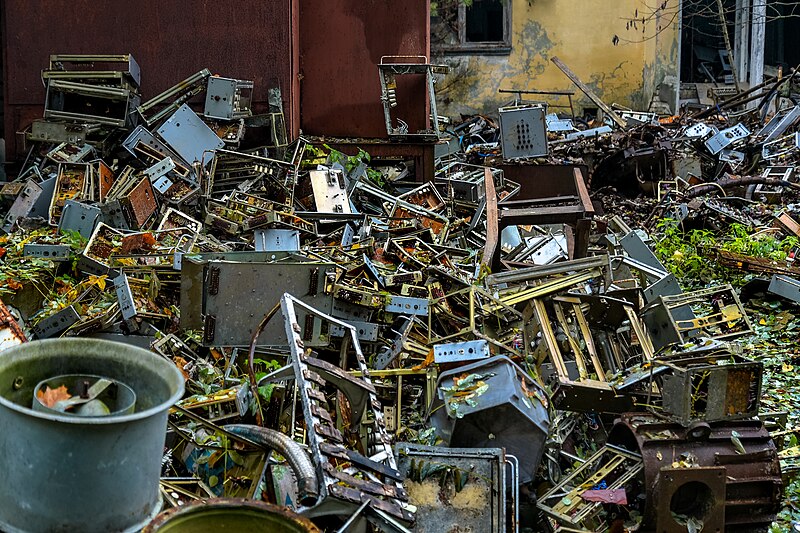This is a follow-up to my last blog post. We were talking about Apple Inc, the world’s largest company by a number of criteria according to Wikipedia, and about its obsession with attacking our right to repair and our right to reuse. I left you wondering about the possible consequences for the global environment of such an attitude, which could only be described, if it were of an individual, as neurotic and sociopathic. In this entry, we dip our toes into Apple’s ocean of crap.
Disclaimer: I do own an Apple MacBook which I use to type all my weekly blog posts (in case it shows that I'm being too soft on them).
I can’t help but unearth these two short and classic videos by New York vlogger Casey Neistat. In iPod’s Dirty Secret (2003, that was 2 years before the launch of YouTube), Neistat exposes Apple’s irreplaceable battery, dead after 18 months, and in Build an iPhone 5 dock for $1 (2012, that was when I started to feel not so cool anymore carrying my Mac around), we learn that there’s absolutely no reason why the company’s charger interfaces aren’t backwards compatible.
Confetti
Remember the three or four R’s ? Neither do I. For the record: Reduce, Reuse, Repurpose, Recycle, or as Apple sees it: Reduce, Reuse, Repurpose, Shred. This detailed article (Vice, 2017) pulls back the curtain on Apple’s recycling policies, using abstruse documents obtained through various freedom of information state laws in the US. Apple forces its contracted recyclers to shred its devices (which, once again, could be repaired or their parts could be reused) into fragments of metal and glass. A Canadian recycler has been sued by Apple for reusing iPhones instead of shredding them (Washington Post, 2020). The confetti-sized pieces are intended to be re-sold as a commodity, or raw material. This material is of lower quality than that obtained from mined ore, as it incorporates the melted rare earth metals needed to produce the technology in the first place. Say goodbye to the rare earth metals. That’s for those devices that are lucky enough to reach Apple’s mail-back or take-back programmes. The rest will probably end up in the landfill.
E-waste and landfills

I thought that now would be a good time to pause and reflect on a few fun facts about e-waste and landfills.
Globally, we generate e-waste at a rate equivalent to 800 laptops per second. E-waste accounts for 70% of all toxic waste. E-waste contains hundreds of substances, of which many are toxic (mercury, lead, arsenic, cadmium, selenium, chromium). Much of our e-waste ends up in landfills in the Global South, where it can be buried, incinerated, or scavenged by workers, many of whom are children, paid 1,50$ (not 15$) per day (not hour). And an average smartphone user replaces it every 18 months. Source: The World Counts.
I’ll leave the question of what we should do about that as an exercise to the reader. But let me add one last thing. If you’re the kind of person who replaces their smartphone every 18 months, because you think it’s cool to have the latest version, then stop that. Now.


This is an important topic that deserves more attention. Especially when Apple’s latest products have been accused of ‘green-washing’ by stating that they are carbon neutral. As the consumers we fail to think about what happens after we are done consuming. Apple also tries to appear green, so the consumer will not feel the overwhelming responsibility of doing something wrong. Refurbished products are, in my opinion, a nice step forward, but again Apple would not do something it would not profit from. All of us -both the consumers and the companies- act like environment is something we can put a price tag on.
I agree with your post that we shouldn’t buy something new while our device is still working well. It is a waste and it is unnecessary. I also do not like how there is a global peer pressure to buy the newest iPhone in order to “belong”. We should be more grateful for what we have and more importantly we should take care of the environment.
I also would like to add that we should give more attention to non-Apple devices. There are better options, for a lower price, considering the environment more.